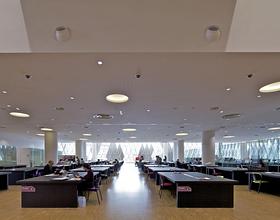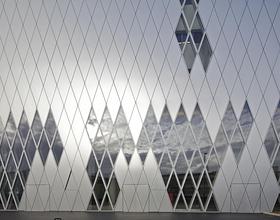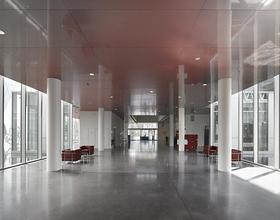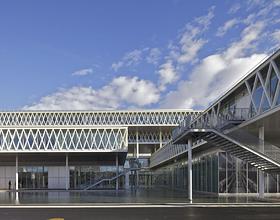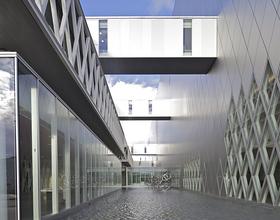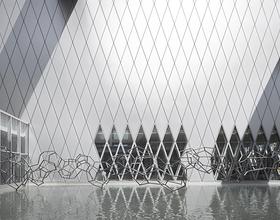NEW NATIONAL ARCHIVES OF FRANCE
-
The project of the New National Archives of France draws its inspiration from the surrounding reality, from the city seen as coexistence of chaos and order.
The concept is born and takes place from this duality which is reflected in the organization of the complex. The design of the New National Archives of France has followed the intent of enhancing the geographical and architectural landscape of the area Pierrefitte sur-Seine Saint Denis, where the building inserts itself.
The project is composed of two main “bodies”: one that extends horizontally, “suspended, lightweight, transparent”; the other with a tension in height, “anchored to the ground, imposing, reflective”. The first, stretching out towards the city, consists of cantilevered volumes called “satellites” that accommodate the offices, the conference room and the exhibition room.
The facades, mostly glazed, give lightness and transparency to the volumes of different proportions, that follow each other and overlap in “suspension” on the surfaces of the water.
The building that accommodates the Archives is an imposing monolith thought as a place dedicated to memory and research. It houses the archival documents and the reading room. The facades of the monolith are coated with aluminium “skin” that runs throughout the volume, except for some glazed insertions that allow the amount of natural light in the reading room and the entry route.
The “noble” sculptural building, with a basin in part lapped against it, reminds the idea of a precious object, a treasure chest, that is reflected in the water veil. The basins insert themselves between the building of the Archives, the “satellite” volumes and at the foot of the satellite volumes. Walkways above them create a connection both between the cantilevered volumes and the two “bodies”. The water veil becomes a vehicle of change for the architecture, designing voids and new spaces, thanks to the reflections and the play of natural light created by the cuts of the suspended volumes and the “skin” of the monolith. The facades of both “bodies” follow a lozenge geometry that is repeated both in the aluminium cladding of the building of the Archives and in the glass facades of the “satellite” volumes.
Photo credits: Roland Halbe, Kamal Khalfi, Philippe Ruault
1870 Projects


